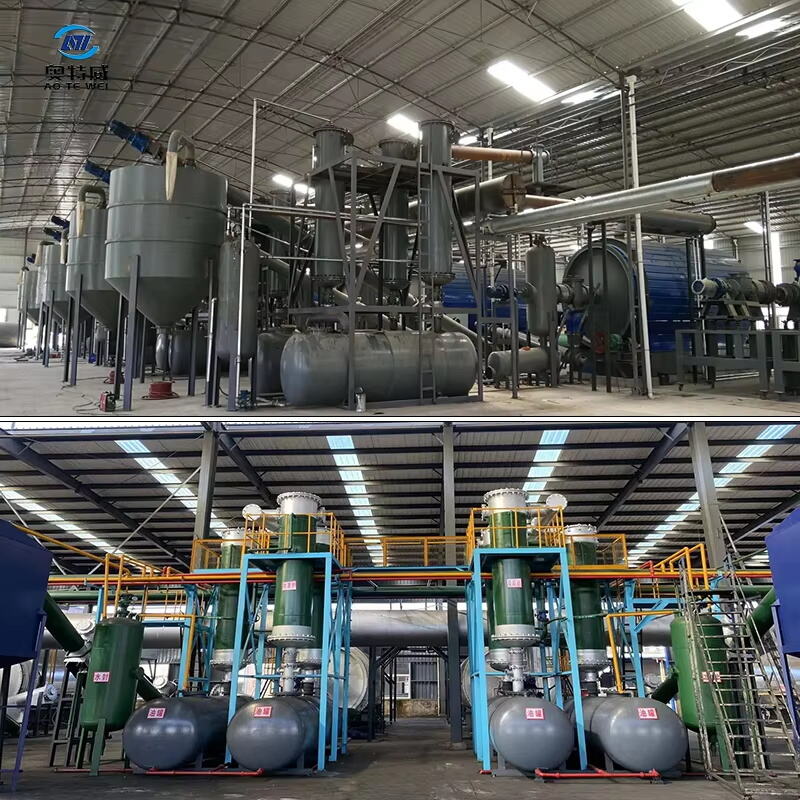The selection of appropriate cracking equipment stands as a critical decision that can significantly impact operational efficiency and bottom-line results in industrial processes. Modern manufacturing facilities face increasing pressure to optimize their production while maintaining quality standards and reducing operational costs. Understanding how to choose the right cracking equipment requires deep insight into various technical specifications, operational requirements, and industry best practices.
Today's industrial landscape demands careful evaluation of cracking equipment options to ensure optimal performance and return on investment. Whether you're upgrading existing systems or planning new installations, the selection process encompasses multiple factors that deserve thorough consideration. Let's explore the crucial elements that contribute to making an informed decision about cracking equipment selection.
When evaluating cracking equipment, processing capacity serves as a fundamental consideration. The equipment must align with your facility's production goals and throughput requirements. Modern cracking equipment comes in various sizes and configurations, each designed to handle specific volume ranges efficiently. It's essential to consider not just current needs but also potential future expansion to avoid premature equipment replacement.
Output consistency plays an equally important role in equipment selection. High-quality cracking equipment should deliver uniform results across different batch sizes and operating conditions. Consider equipment that offers adjustable settings to accommodate various material types and desired output specifications.
In today's energy-conscious industrial environment, the power consumption of cracking equipment significantly impacts operational costs. Modern designs incorporate energy-efficient features such as improved insulation, optimized heating elements, and smart power management systems. Look for equipment that offers the best balance between performance and energy usage.
Advanced cracking equipment often includes energy recovery systems that capture and reuse thermal energy, reducing overall power consumption. These features can lead to substantial cost savings over the equipment's lifetime while contributing to environmental sustainability goals.
The versatility of cracking equipment in handling different feed materials can significantly influence operational flexibility. Advanced systems offer adjustable parameters to process various material grades and compositions effectively. Consider equipment that can handle your current material requirements while providing the flexibility to accommodate potential future changes in feed specifications.
Material feeding systems should ensure consistent and controlled input to maintain optimal cracking efficiency. Look for equipment with reliable feeding mechanisms that prevent material bridging or irregular flow patterns, which can affect product quality and equipment performance.
Modern cracking equipment incorporates sophisticated quality control features to ensure consistent output specifications. These may include real-time monitoring systems, automated adjustment capabilities, and precise control over critical process parameters. The ability to maintain tight quality control directly impacts product value and customer satisfaction.
Consider equipment that offers comprehensive monitoring and control systems, allowing operators to track key performance indicators and make necessary adjustments promptly. Advanced analytics capabilities can help identify trends and optimize process parameters for improved efficiency.

Regular maintenance ensures optimal performance and longevity of cracking equipment. Equipment design should facilitate easy access to critical components for inspection and maintenance. Look for systems with modular construction that simplifies component replacement and reduces downtime during maintenance activities.
Consider the availability of spare parts and technical support when selecting cracking equipment. Established manufacturers typically offer comprehensive maintenance programs and readily available replacement components, minimizing potential operational disruptions.
Safety features should be a top priority when selecting cracking equipment. Modern designs incorporate multiple safety systems, including emergency shutoffs, protective guards, and warning indicators. Equipment layout should promote safe operation while maintaining efficiency.
Ergonomic considerations in equipment design can significantly impact operator comfort and productivity. Look for features such as accessible control panels, clear visibility of critical areas, and comfortable working heights to ensure optimal operator performance.
Modern cracking equipment should seamlessly integrate with existing plant control systems. Look for equipment that supports industry-standard communication protocols and offers flexible integration options. Advanced control systems can provide real-time data analysis, remote monitoring capabilities, and automated operation features.
Consider the scalability of control systems to accommodate future expansion or upgrades. Equipment with modular control architecture allows for easier updates and integration of new features as technology evolves.
The industrial landscape continues to evolve with new technologies and changing market demands. Selecting cracking equipment that offers adaptability to future requirements can protect your investment. Consider equipment designs that allow for upgrades and modifications to meet emerging industry standards and production requirements.
Look for manufacturers with strong research and development programs who demonstrate commitment to continuous product improvement. This ensures access to future innovations and updates that can enhance equipment performance and efficiency.
The lifespan of cracking equipment typically ranges from 15 to 25 years, depending on maintenance practices, operating conditions, and usage intensity. Regular maintenance and proper operation can significantly extend equipment life beyond these averages.
To determine optimal capacity, analyze your current production requirements, forecast future growth, and consider seasonal variations in demand. It's recommended to choose equipment with capacity 15-20% above current needs to accommodate future expansion.
Critical maintenance indicators include power consumption patterns, output quality consistency, operating temperatures, vibration levels, and wear patterns in critical components. Regular monitoring of these parameters helps prevent unexpected downtime and maintains optimal performance.
Maximize energy efficiency by selecting equipment with advanced insulation, heat recovery systems, and smart power management features. Regular maintenance, optimal loading patterns, and proper operator training also contribute significantly to energy efficiency.
 Hot News
Hot News2024-09-25
2024-09-18
2024-09-12
2024-09-05
2024-08-30
2024-08-23

Copyright © 2025 by Shangqiu AOTEWEI environmental protection equipment Co.,LTD Privacy policy